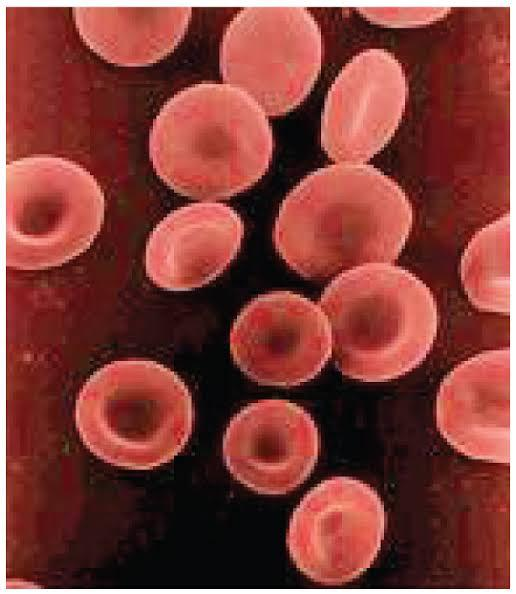
Which of the following contain the largest RBC?
A. Frog
B. Elephants
C. Musk Deer
D. Amphiuma (salamander)
Answer
562.5k+ views
Hint:- Blood corpuscles are generally called formed elements of blood. Mammalian blood corpuscles are of three main kinds, erythrocytes, leukocytes and platelets. Of these, erythrocytes or RBCs are the most numerous blood cells and they constitute more than 98 percent of blood cells. Non-mammalian corpuscles include RBCs, leukocytes and thrombocytes or spindle cells.
Complete step-by-step solution:-
Erythrocytes or RBCs are the smallest and the most numerous blood cells. The average total count of human erythrocytes is 4.5-6 million per cubic mm of blood. However, it may go higher in the evening, after meals, during muscular exercise, at higher altitudes, high environmental temperatures, high barometric pressures etc. Also, it is high in infants during the first few days of life. Usually, it is higher in males than females. The pathological condition in which RBC count goes abnormally high is called polycythemia. The opposite condition in which the RBC count or the haemoglobin content of the blood falls abnormally low is called anaemia.
Mature mammalian erythrocytes are non-nucleated, circular, disc-like and biconcave bodies, without endoplasmic reticulum, mitochondria, golgi bodies and centrioles. However, non-mammalian erythrocytes are nucleated cells. Young mammalian RBCs are nucleated. But, as they mature, they lose their nucleus and membrane-bound cell organelles.
A mature erythrocyte consists of a spongy network, known as stroma. It is enveloped by a limiting plasma membrane. Stroma is formed of interlacing lipoprotein molecules. Cephalin and lecithin are its lipid constituents. Stroma contains haemoglobin and carbonic anhydrase and many other enzymes. Haemoglobin is a red coloured, iron containing respiratory pigment involved in the transport of oxygen and carbon dioxide.
Erythrocytes are formed of water, haemoglobin, enzymes, organic constituents and inorganic constituents. About 100 enzymes are believed to be present in RBCs.
The average lifespan of erythrocytes is 120 days. It is estimated that nearly 3 million RBCs die every second. To compensate for this heavy loss an equal or still greater number is produced in the bone marrow.
Amphibians have largest erythrocytes. In amphibians, Amphiuma has the largest RBC. It is the genus of aquatic salamanders native to regions of the United States.
So, here the correct answer is D) Amphiuma (salamander).

Note:- Normally the rate production and destruction of RBC are mutually balancing. The rate of production of RBCs is determined by the oxygen level in the blood. If oxygen level is low, bone marrow will produce more RBCs than those that are destroyed in the liver and spleen. This is an adaptation of mammals at higher altitudes. If the oxygen level is high, bone marrow will produce a lesser number of RBCs. The renal hormone erythropoietin controls the production of erythrocytes.
Complete step-by-step solution:-
Erythrocytes or RBCs are the smallest and the most numerous blood cells. The average total count of human erythrocytes is 4.5-6 million per cubic mm of blood. However, it may go higher in the evening, after meals, during muscular exercise, at higher altitudes, high environmental temperatures, high barometric pressures etc. Also, it is high in infants during the first few days of life. Usually, it is higher in males than females. The pathological condition in which RBC count goes abnormally high is called polycythemia. The opposite condition in which the RBC count or the haemoglobin content of the blood falls abnormally low is called anaemia.
Mature mammalian erythrocytes are non-nucleated, circular, disc-like and biconcave bodies, without endoplasmic reticulum, mitochondria, golgi bodies and centrioles. However, non-mammalian erythrocytes are nucleated cells. Young mammalian RBCs are nucleated. But, as they mature, they lose their nucleus and membrane-bound cell organelles.
A mature erythrocyte consists of a spongy network, known as stroma. It is enveloped by a limiting plasma membrane. Stroma is formed of interlacing lipoprotein molecules. Cephalin and lecithin are its lipid constituents. Stroma contains haemoglobin and carbonic anhydrase and many other enzymes. Haemoglobin is a red coloured, iron containing respiratory pigment involved in the transport of oxygen and carbon dioxide.
Erythrocytes are formed of water, haemoglobin, enzymes, organic constituents and inorganic constituents. About 100 enzymes are believed to be present in RBCs.
The average lifespan of erythrocytes is 120 days. It is estimated that nearly 3 million RBCs die every second. To compensate for this heavy loss an equal or still greater number is produced in the bone marrow.
Amphibians have largest erythrocytes. In amphibians, Amphiuma has the largest RBC. It is the genus of aquatic salamanders native to regions of the United States.
So, here the correct answer is D) Amphiuma (salamander).

Note:- Normally the rate production and destruction of RBC are mutually balancing. The rate of production of RBCs is determined by the oxygen level in the blood. If oxygen level is low, bone marrow will produce more RBCs than those that are destroyed in the liver and spleen. This is an adaptation of mammals at higher altitudes. If the oxygen level is high, bone marrow will produce a lesser number of RBCs. The renal hormone erythropoietin controls the production of erythrocytes.
Recently Updated Pages
Master Class 12 Social Science: Engaging Questions & Answers for Success

Master Class 12 Physics: Engaging Questions & Answers for Success

Master Class 12 Maths: Engaging Questions & Answers for Success

Master Class 12 Economics: Engaging Questions & Answers for Success

Master Class 12 Chemistry: Engaging Questions & Answers for Success

Master Class 12 Business Studies: Engaging Questions & Answers for Success

Trending doubts
What are the major means of transport Explain each class 12 social science CBSE

Which are the Top 10 Largest Countries of the World?

Draw a labelled sketch of the human eye class 12 physics CBSE

How much time does it take to bleed after eating p class 12 biology CBSE

Explain sex determination in humans with line diag class 12 biology CBSE

Plot a graph between potential difference V and current class 12 physics CBSE




